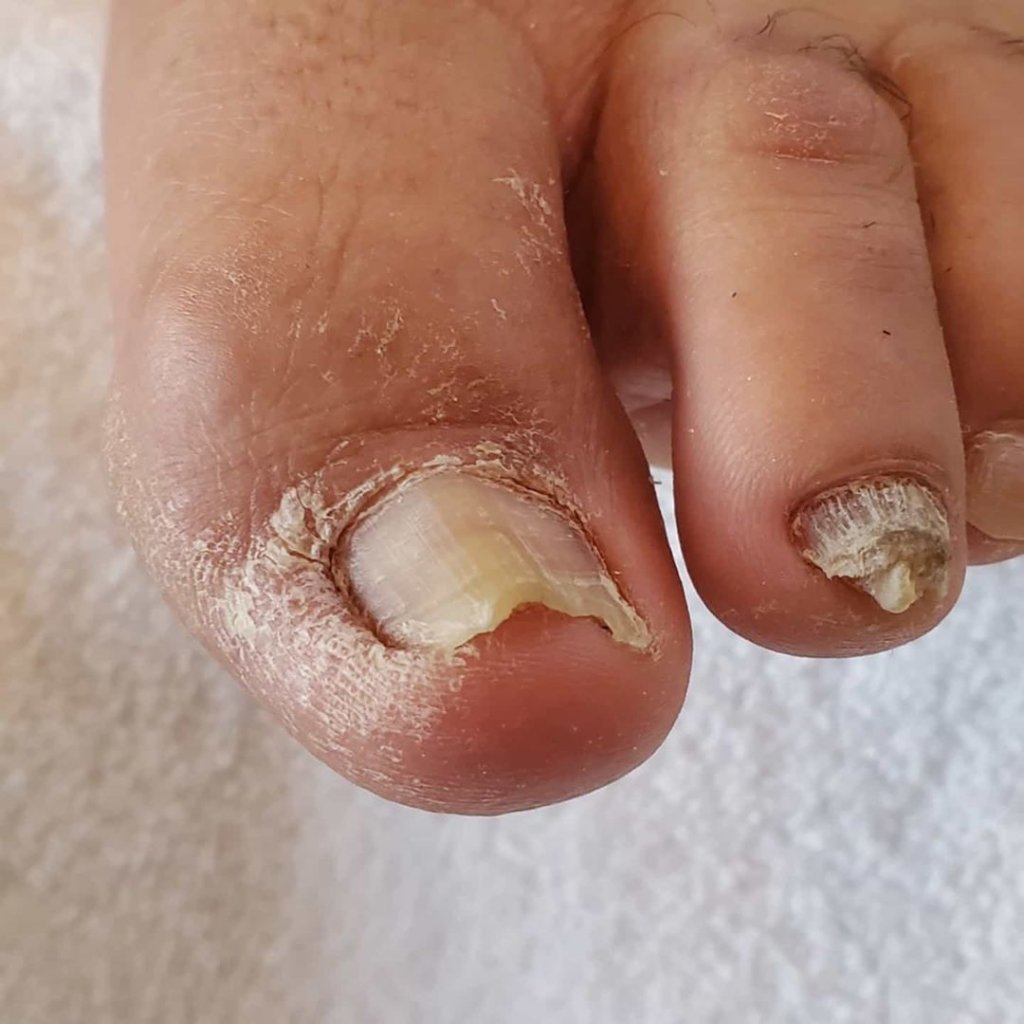Fungal nail infections, also known as onychomycosis, are a common dermatological issue that can affect anyone at some point in their lives. Although they are not typically serious, these infections can be both unpleasant and challenging to treat. In this comprehensive guide, we will delve into the world of fungal nail infections, covering everything from their causes and symptoms to effective treatment options and preventive measures.
Signs and Symptoms of a Fungal Nail Infection
A fungal nail infection may start without any noticeable symptoms. However, as it progresses, it can manifest in various ways, including:
- Discoloration of the Nail: The infected nail may change color, turning white, black, yellow, or even green.
- Thickening and Distortion: The nail can become thicker and take on an unusual shape or texture, making it difficult to trim.
- Pain or Discomfort: Particularly when pressure is applied to the affected nail, you may experience pain or discomfort.
- Brittle or Crumbly Nails: Sections of the nail may break off or crumble, leading to further deterioration.
- Skin Issues: The skin surrounding the affected nail may also exhibit symptoms such as infection, itchiness, redness, swelling, and cracking.
Causes of Fungal Nail Infections
Fungal nail infections are primarily caused by fungi that typically coexist harmlessly on the skin. These fungi, which are also responsible for conditions like athlete’s foot, tend to thrive in warm, dark, and moist environments – precisely the conditions often found on the feet. Several factors can increase your susceptibility to these infections, including:
- Lack of Foot Hygiene: Not keeping your feet clean and dry can create a conducive environment for fungal growth.
- Inadequate Footwear: Wearing shoes that cause excessive sweating can lead to increased moisture, providing an ideal breeding ground for fungi.
- Walking Barefoot in Risky Environments: Places such as communal showers, locker rooms, and gyms can harbor fungal infections, so walking barefoot in these areas increases the risk.
- Nail Damage: If you’ve damaged your nails in any way, it can make it easier for fungi to infiltrate.
- Weakened Immune System: A compromised immune system, often due to various health conditions like diabetes, psoriasis, or peripheral arterial disease, can reduce your body’s ability to fend off infections.
Treating Fungal Nail Infections
While fungal nail infections are not always a cause for concern, they are unlikely to resolve without treatment. Treatment options can vary based on the severity of the infection and individual preferences.
Antifungal Medication
Antifungal medication is a common approach to treating fungal nail infections and is available in two forms:
- Tablets: Medications like Terbinafine and Itraconazole are commonly prescribed and need to be taken once or twice daily for several months. It’s crucial to complete the full course of treatment to prevent recurrence. Potential side effects may include headache, itching, diarrhea, loss of taste sensation, and rash.
- Nail Paint: Antifungal nail paint can be an alternative to tablets. It is applied directly to the affected nail and usually needs to be used for several months. While it is generally less effective than tablets, it often causes no side effects.
Important Note: If the antifungal treatment is effective, you will notice the growth of a new, healthy nail from the base over several months, replacing the infected nail.
Softening and Scraping
Some individuals may prefer a more proactive approach to treatment, involving the use of a treatment kit available at pharmacies. These kits contain a 40% urea paste, plasters, and a scraping device. This method softens the infected parts of the nail, allowing them to be gradually scraped away, making room for healthy nail growth.
To use this treatment method:
- Wash the affected area and ensure it is thoroughly dry.
- Apply the urea paste to the infected nails.
- Cover the nails with plasters and leave them for 24 hours.
- The next day, wash off the paste and gently scrape away the softened parts of the nail.
- Repeat this process daily for 2 to 3 weeks.
Once no more infected nail parts can be removed, consider using antifungal nail paint to prevent reinfection as the new nail regrows.
Nail Removal and Laser Treatment
In extreme cases, nail removal may be recommended if the infection is severe or painful and other treatments have proven ineffective. The surgical removal of the affected nail provides room for a new nail to eventually grow in its place.
For particularly stubborn fungal nail infections, laser treatment is a potential option. This treatment employs high doses of light energy to destroy the fungus. However, it’s worth noting that the efficacy of laser treatment is still under investigation, and it is typically not available through the NHS.
Preventing Fungal Nail Infections
Prevention is often the best course of action when it comes to fungal nail infections. Here are some effective steps to prevent these infections from occurring or worsening:
Do
- Keep your hands and feet clean and dry.
- Wear well-fitting shoes made of natural materials and clean cotton socks, allowing your feet to breathe.
- Regularly clip your nails to keep them short, avoiding the sharing of clippers or scissors.
- Replace old footwear that may be contaminated with fungi.
- Promptly treat athlete’s foot to prevent the infection from spreading to your nails.
- Ensure your towels are washed regularly.
- Make sure any equipment used at nail salons is properly sterilized between uses.
Don’t
- Share towels and socks with others.
- Walk around barefoot in public pools, showers, and locker rooms; consider using special shower shoes to protect your feet.
Fungal nail infections are common, but with the right knowledge, effective treatment, and preventive measures, you can manage them effectively. If you have concerns about a fungal nail infection, consult your GP or pharmacist for guidance and appropriate treatment options.

